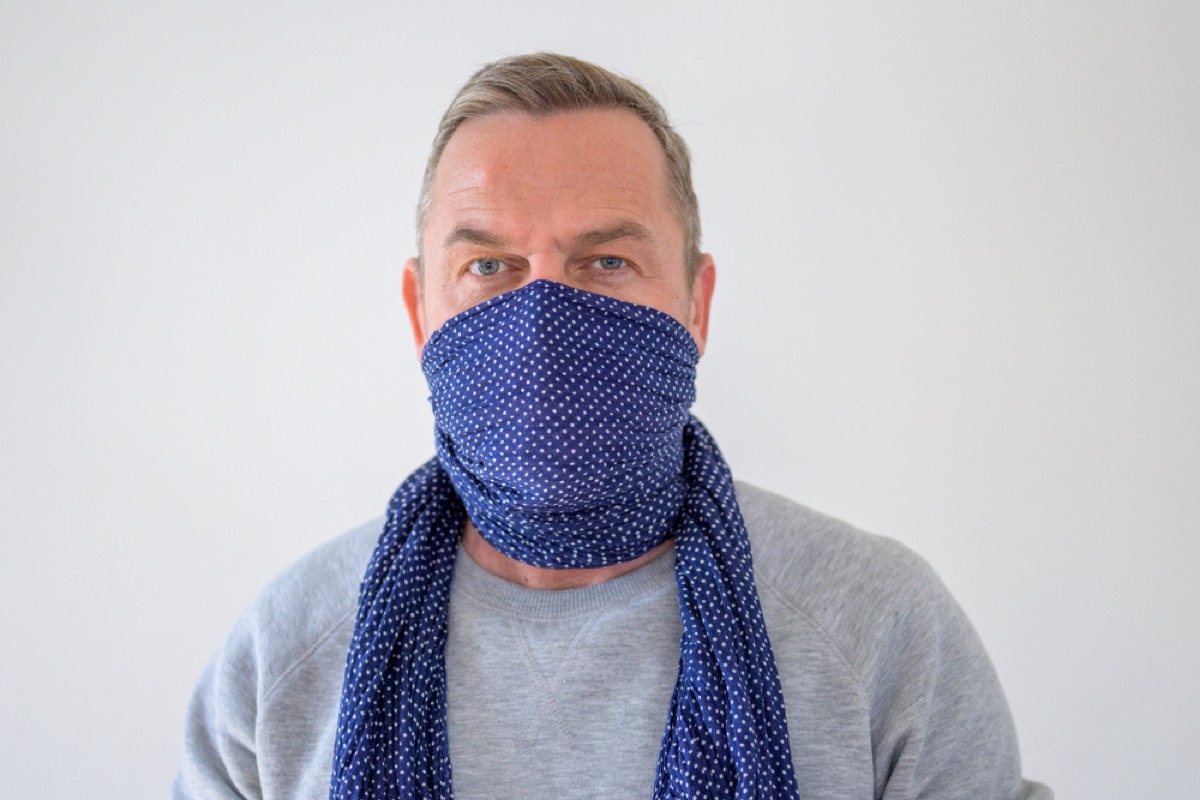A recent University of Arizona study, published in the Journal of Hospital Infection, assessed the ability of different mask materials to protect their wearers from infection in a virus-heavy environment. They found that scarves, as well as cotton T-shirts, reduced infection risk by only 44 percent after 30 seconds, and 24 percent after 20 minutes. Therefore, they concluded, these types of face covering are just “slightly better than wearing no mask at all.” “We knew that masks work,” lead author Amanda Wilson, an environmental health sciences doctoral candidate in the Department of Community, Environment and Policy, said in a statement. “But we wanted to know how well, and compare different materials’ effects on health outcomes.” While scarves and shirts got low marks, researchers found that N99 masks were unsurprisingly the best option for preventing infection, with N95 masks and surgical masks close behind. However, these masks are hard to come by, and because they’re necessary personal protective equipment (PPE) for medical workers, there’s some debate over whether average citizens should have access to them.ae0fcc31ae342fd3a1346ebb1f342fcb If you’re looking for another strong option, your next best bet is something you probably have at home—a vacuum filter, which can be fit into the pocket of a cloth mask. Wilson and her team found that vacuum filters reduced infection risk by 83 percent after 30 seconds of exposure, and 58 percent after 20 minutes. RELATED: For more up-to-date information, sign up for our daily newsletter. What’s interesting about the University of Arizona study is that it was focused on how face coverings protect the wearer. In reality, the main purpose of face masks is to protect those around you from any viral particles you may be expelling through your mouth and nose. Nevertheless, there’s increasing evidence that masks keep both parties safer—particularly if they’re made of stronger stuff than a scarf or shirt. “We were focusing on masks protecting the wearer, but they’re most important to protect others around you if you’re infected,” Wilson noted. “If you put less virus out into the air, you’re creating a less contaminated environment around you. As our model shows, the amount of infectious virus you’re exposed to has a big impact on your infection risk and the potential for others’ masks to protect them as well.” And for more on the face coverings you should be wearing, This Is Why Face Masks Are Actually Worse Than Face Shields, Doctor Says.
